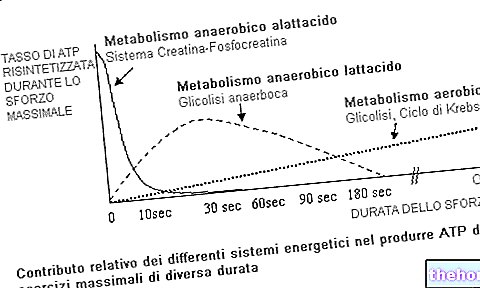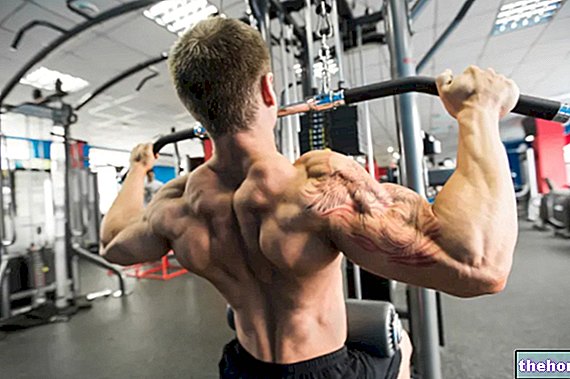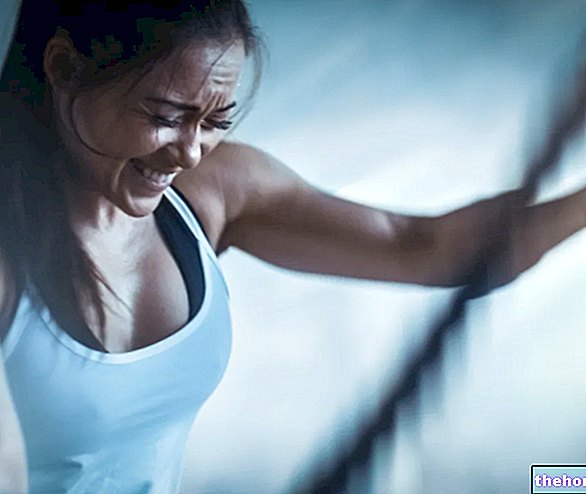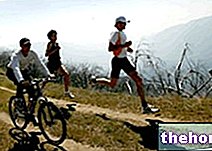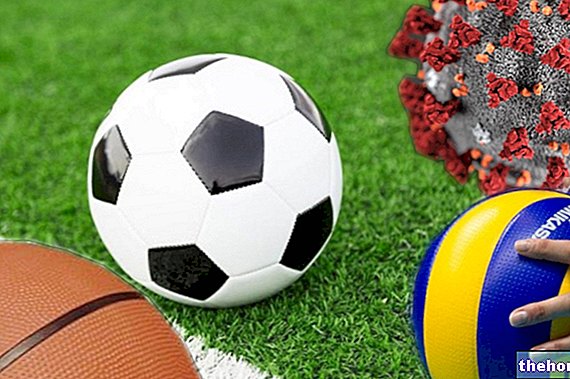Sixth Part
HOW LONG DOES AN ATHLETE HAVE TO STAY AT ALTITUDE OR IN A HYPOXIC / HYPOXIC ENVIRONMENT TO OBTAIN THE EFFECTS ON PERFORMANCE?
The fact that short-term exposures (less than 10 hours for a period of time less than 3 weeks) do not induce an increase in RBCs seems to suggest the existence of a "threshold", but it is not known how much this minimum exposure / dose is. is related to the level of hypoxia, the daily duration or the total duration.
Athletes who live at 2500m, train basic at 2000-3000m and perform intense training at 1250m (= High-High-Low) have the same improvements as High-Low athletes, i.e. athletes who live high and do all the training. "training at low altitude
SO:

2. The main mechanism lies in the stimulation of erythropoiesis, with increases in hemoglobin, blood volume and aerobic capacity.
3. The effect of this increase in the transport of O2 is amplified by the fact that the subjects are able to maintain, during intense exercise, the normal flow of oxygen they have at sea level, avoiding the down regulation of the skeletal muscle structure which occurs when training also takes place in hypoxia.
It is important to recognize that the pathway involved in erythropoiesis is a complex and non-linear pathway in which genetic variability plays a very important role; in this sense, however, there are still many studies to be done.
INTENSITY "of the EXERCISE
H = hypoxia
N = normoxia
Intense training: (4-6mmol / L lactate) at the same relative intensity = 66-67%
Non-intense training: (2-3 mmol / L lactate) at the same relative intensity = 58-52%
The workloads were chosen so that the H-intense group and the N-low intensity group worked at a similar absolute power (54-59% of the maximum power in normoxia).
SUBJECTS NOT TRAINED: FUNCTIONAL RESULTS
VO2max measured in normoxia increases by 9-11% regardless of altitude and type of training. However, when VO2max is measured at 3200m the N groups only increase by 3%, while the H groups increase by 7%. The 2 groups H achieved a higher performance than the N groups in altitude.
Apart from the obvious advantages of hypoxia training for hypoxic performance, IN SUBJECTS NOT SPECIFICALLY TRAINED, FUNCTIONAL IMPROVEMENTS IN NORMOXY WERE SIMILAR.
SUBJECTS NOT TRAINED: STRUCTURAL CHANGES
5% increase in skeletal muscle volume (knee extensor) in the H-Intense group. The length of the capillaries increases in the H-Intense group. Volume of mitochondria increases by 11-54% in all groups. Both work intensity and hypoxia have a significant effect on the oxidative capacity of the muscle.
If the exposure to hypoxia is limited to the duration of the training, specific responses at the molecular level in the skeletal muscle tissue can be highlighted.
High-intensity H-training also induces an increase in VEGF (vascular endothelial growth factor), capillarity and myoglobin mRNA.
TRAINED ATHLETES
The sessions in hypoxia replace all the endurance work but not the technical aspects of the training.
VO2 increases in subjects trained in hypoxia when measured at 500m, 1800m, 2500m, 3200m.
Lactate concentration and Borg scale were significantly reduced at maximum exercise intensity in the group trained in hypoxia but only at the training altitude.
The addition of hypoxic training sessions to the usual training sessions improves mitochondrial function, increasing the control of the respiratory chain and determining a better integration between the demand and the supply of ATP.
In the muscles after training in hypoxia (but not after training in normoxia) the mRNA concentrations of hypoxia-inducible factor 1alpha (+ 104%), glucose transporter -4 (+ 32%) are significantly increased at the molecular level, phosphofructokinase (+ 32%), peroxisome proliferator-activated receptor gamma coactivator 1alpha (+60), citrate synthase (+ 28%), cytochrome oxidase 1 (+ 74%) and 4 (+ 36%), carbonic anhydrase-3 ( + 74%), and manganese superoxide dismutase (+ 44%).
RESISTANT MID-BOTTOM: HIGH-ALTITUDE TRAINING
MARATHON: HIGH ALTITUDE TRAINING
BIBLIOGRAPHY: TEXTS, DISPENSES AND SITES CONSULTED
Lecture notes by Dr. E. Pagano
L. BOSCARIOL, Notes on Sports Medicine, Physiology and Theory, Technique and Didactics of Individual Sports (from the lectures and lecture notes by Prof. A. Cogo, L. Craighero, and G. Lenzi)
W. J. GERMAN AND C. L. STANFIELD - Human Physiology - Discoveries: the effects of altitude (page 600) - Edises 2002
www.ski-nordik.it/allificazione/allenam_in_quota/allenamenti-in-quota.htm
www.arnoga.com/ita/allificazione.html#quota
www.paesieimphotos.it/AllAMENTO/Fisiopatologia.htm
C. G. GRIBAUDO AND G. P. GANZIT - Sports medicine - ISEF Collection - Utet - 1988
ASTEGIANO P.: Eligibility criteria for an international high altitude alpine skiing competition, Communication - 1st Congress «Skiing in the Piedmont region», Sestriere, 1984.
BERTELLI A .: Average levels of physical efficiency in participants in international ski mountaineering competitions, Thesis on Medicine and Surgery, Turin, 1985.
BERTI T., ANGELINI C .: Medicine and the Mountains, Cleup Ed., Padua, 1982.
CERRETELLI P., DI PRAMPERO P.E .: Sport, environment and human limit, Mondadori, Milan, 1985. GANZIT G.P .: Cardio-circulatory and respiratory reactions in muscular work in untrained citizens of different ages depending on the altitude, 1st Congress "Skiing in the Piedmont region", Sestriere, 1984.>
LUBICH T., CESARETCI D., BURZI R., BARGOSSI TO., DE MARCHI R .: Pathophysiology of high-altitude sports activities, in Physiopathology of Sport, 11, Aulo Gaggi Ed., Bologna, 1985.
MOSSO AA.: Physiology of man in the Alps, Treves, Milan, 1897.
PORTONARO F .: Physiological medical study of a group of mountaineers before and after an intense period of climbing at medium-high altitudes, Thesis I.S.E.F., Turin, 1984.
PUGH L.G.C.E .: Athlètes et altitude, J. Physiol., 192, 619-646, 1967. WARD M .: Mountain Medicine, Crosby-Lockwood-Staples, London, 1975. WYSS V .: Sport at medium altitude, Med. Sport, 4, 234-237, 1966.
P. ZEPPILLI: Cardiology of sport, third edition 2001 - International scientific publishing house
Other articles on "Altura and Alliance"
- Altitude training
- Altitude and training
- Altitude and altitude sickness
- Training in the mountains
- Erythropoietin and altitude training

